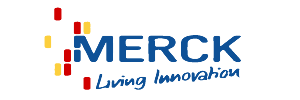More than One Jewel on the Crown
——Polymerization and Maximization
This system will help us achieve the goal of selective polymerization of enzymes. Polymerized enzymes, different from normal scattered condition, has much more opportunities to contact with the substrates. Therefore, our project aims to increase as well as to control the efficiency of complex reactions.
Based on the success of the individual fusion protein expression, we tried to add more jewels on the MembRing crown.
We choose another two groups of 12bp sequences on the connecter as binding sites.
Replace the mRFP with YFP, CFP and use corresponding TALs to construct two new fusion proteins. The three complete sequences were respectively connected to the pRSFDuet–1, pACYCDuet–1 and pCDFDuet–1,then the connecter (pBluescript II KS(+)) were co-transfected into competent BL21. And the fusion proteins are induced expression, leading to an annular protein multimerization system in cytomembrane.
We will try to put more enzymes into the polymerization system in the future. However, limited by carrying capacity of the cell membrane and the steric effect between fusion proteins, the number of enzymes will not be large.
 "
"







